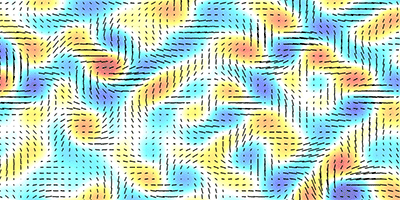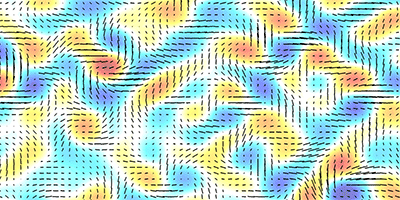Dusting off the Cosmic-Gravitational-Wave signal
Earlier this year, the BICEP2 collaboration reported possible evidence of primordial gravitational waves from the observed polarization of the cosmic microwave background (CMB). However, several scientists have cast doubts on the findings because cosmic dust in our own galaxy can produce a similar signal. A new analysis shows that dust contamination would result in a directional preference or alignment in the polarization signals. The authors suggest that this anisotropy could be distinguished from the overall isotropy expected from the randomly oriented gravitational waves.
Cosmological models predict that spacetime ripples (gravitational waves) are generated by an expansionary phase of the early Universe called inflation. Such waves would have left a detectable marker in the form of swirling patterns (or modes) in CMB polarization maps. BICEP2, a microwave telescope at the South Pole, detected B modes, but follow-up studies have suggested that the signal could come from dust emission, rather than gravitational waves.
To help settle the issue, Marc Kamionkowski and Ely Kovetz of Johns Hopkins University, Maryland, have devised an algorithm for unmasking the contribution of dust in CMB polarization data. They premise their method on the fact that dust grains are aligned—and therefore emit polarized light—because of the effect of galactic magnetic fields. In a small region of sky, these fields are expected to be fairly uniform, so the resulting polarization should have a preferred orientation. This would lead to a characteristic anisotropy which, when analyzed in terms of modes, produces an angularly dependent pattern (called “hexadecapolar”) that would be a red flag of dust contamination. The authors think this analysis can complement other techniques (such as observing at different frequencies) for isolating a true gravitational wave signal in future surveys.
This research is published in Physical Review Letters.
–Michael Schirber





